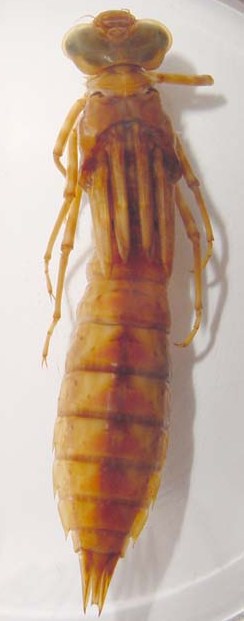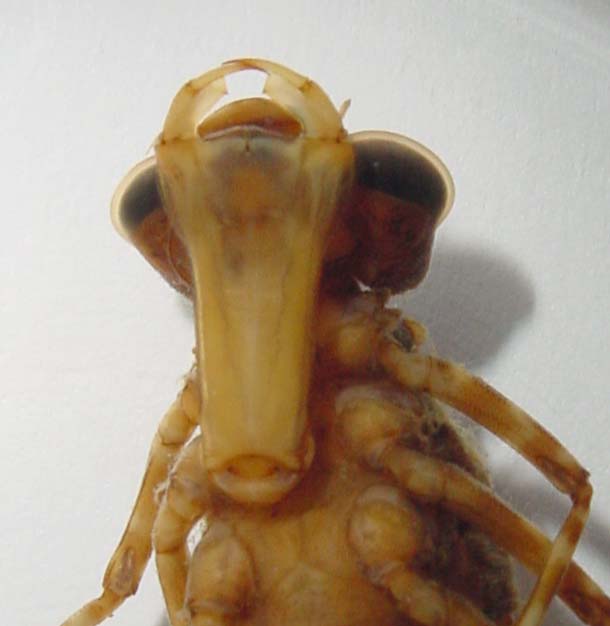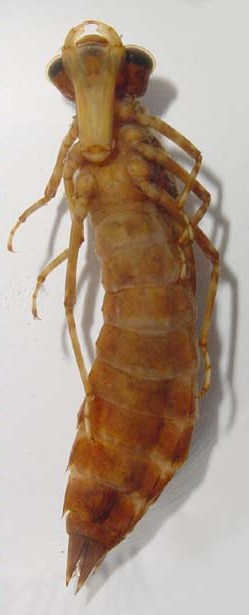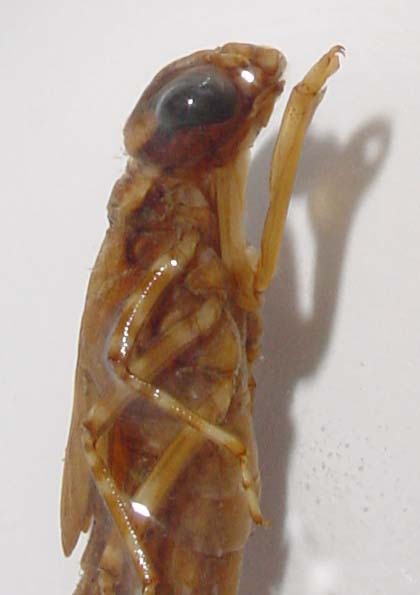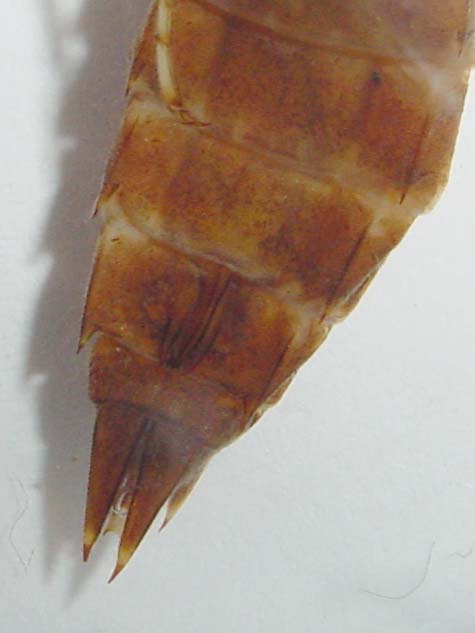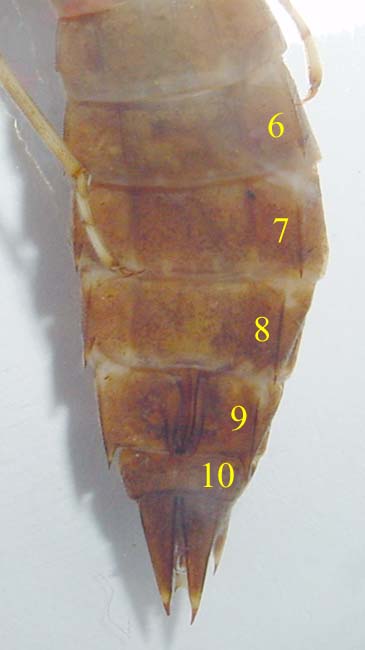
THE XERCES SOCIETY FOR INVERTEBRATE CONSERVATION Aquatic Invertebrates in Pacific Northwest Freshwater Wetlands |
| Identify taxa |
Aeshnidae (Darners) |
Aeshnid larvae primarily live in still waters. They spend their time hunting prey while climbing around on vegetation, woody debris and similar substrates of lakes, marshes, ponds, and slow parts of streams and rivers. Two genera, Aeshna and Anax, are found throughout the Northwest. A third species, Oplonaeschna armata, is primarily from the Southwest, but has also been found in Inyo County, CA. As is typical of dragonfly larvae, their body is thick with 5 relatively short points at the end of the abdomen. Their abdomen is generally longer than most dragonfly larvae. Their labium is flat, and their antennae have 6 or 7 segments that are long, thin, and not overly hairy. To differentiate between the genera Aeshna and Anax, look at two characters: the width to length ratio of the eyes and the spines on the last abdominal segments. The eyes of Aeshna are much shorter than wide. They have spines on the sides of the last four abdominal segments (6-9), and these spines are shorter than the last two segments. The eyes of Anax are about as long as wide. They have spines on the sides of the last three abdominal segments (7-9), and these spines are as long as the last two sements. |
Size:
xlarge
|
 |
© 2007 Xerces Society
Contact info@xerces.org
